With soaring home prices and mortgage rates pushing affordability to levels not seen since the 2006 housing bubble, borrowers are increasingly turning to adjustable-rate mortgages or paying “points” to buy down their interest rate, according to numbers released Monday by mortgage data and technology provider Black Knight.
In its latest monthly Mortgage Monitor report, Black Knight warned that if mortgage rates rise by another half a percentage point — or if home prices go up another 5 percent — affordability will hit the worst levels on record. About one-third of housing markets are already there.
The best measure of affordability is payment-to-income ratio (PMI) — the share of median income a homebuyer putting 20 percent down on the average priced home needs to set aside to make their monthly mortgage payment.
Source: Black Knight Mortgage Monitor.
In July 2006 — on the eve of the housing crash and 2007-09 recession — national PMI hit an all-time high of 34.1 percent. With home prices up 19.9 percent from a year ago in March, and mortgage rates well above 5 percent, PMI hit 32.5 percent as of April 21, Black Knight said.
In “kitchen table” terms, the average mortgage payment is up 38 percent this year alone, to $1,884, a 72 percent increase from the start of the pandemic, said Black Knight Data & Analytics President Ben Graboske in a statement.
While those are national statistics, Black Knight says 95 percent of the 100 largest U.S. markets are now less affordable than their long-term (1995-2003) benchmarks, compared to 6 percent at the start of the pandemic.
Black Knight data shows 37 markets that represent nearly a third of the country are now the least affordable they’ve ever been.
To cope with rising interest rates a growing proportion of borrowers are turning to adjustable-rate mortgage (ARM) loans, or paying “points” to get a lower rate.
Not only do ARM loans have a lower introductory rate than fixed-rate loans, but those introductory rates haven’t increased as much as rates on fixed-rate loans.
While rates on 30-year fixed rate mortgages are up by 2 full percentage points in the first 4 months of 2022, the introductory rate on 5/1 ARMs rose 1.37 percentage points during the same period. That means the difference, or “spread” between fixed-rate and ARM loans was 1.33 percentage points in late April — the widest it’s been since 2014.
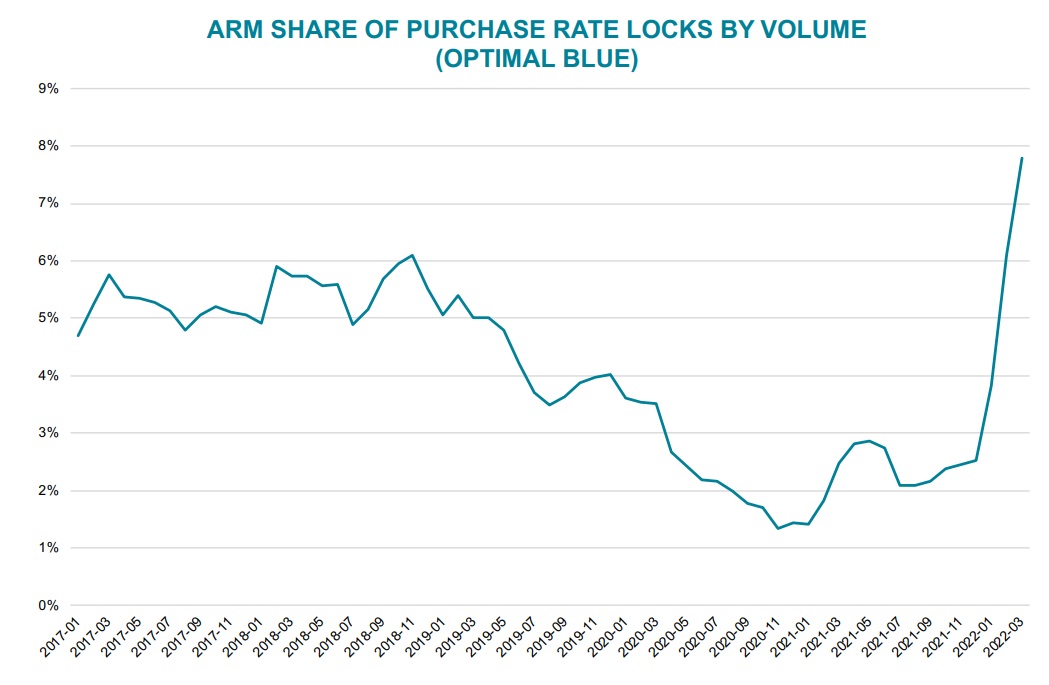
Source: Black Knight Mortgage Monitor.
That’s helped push the ARM share of purchase loan rate locks to nearly 8 percent in March, up from 2.5 percent in December. That’s the highest share since at least 2017, when Black Knight’s Optimal Blue division began tracking the metric.
Because borrowers seeking ARM loans also apply for bigger loans — $728,900, on average, compared to $359,000 for borrowers requesting fixed-rate mortgages — ARM loans represented 17 percent of the dollar volume borrowers applied for during the week ending April 22, according to a survey by the Mortgage Bankers Association.
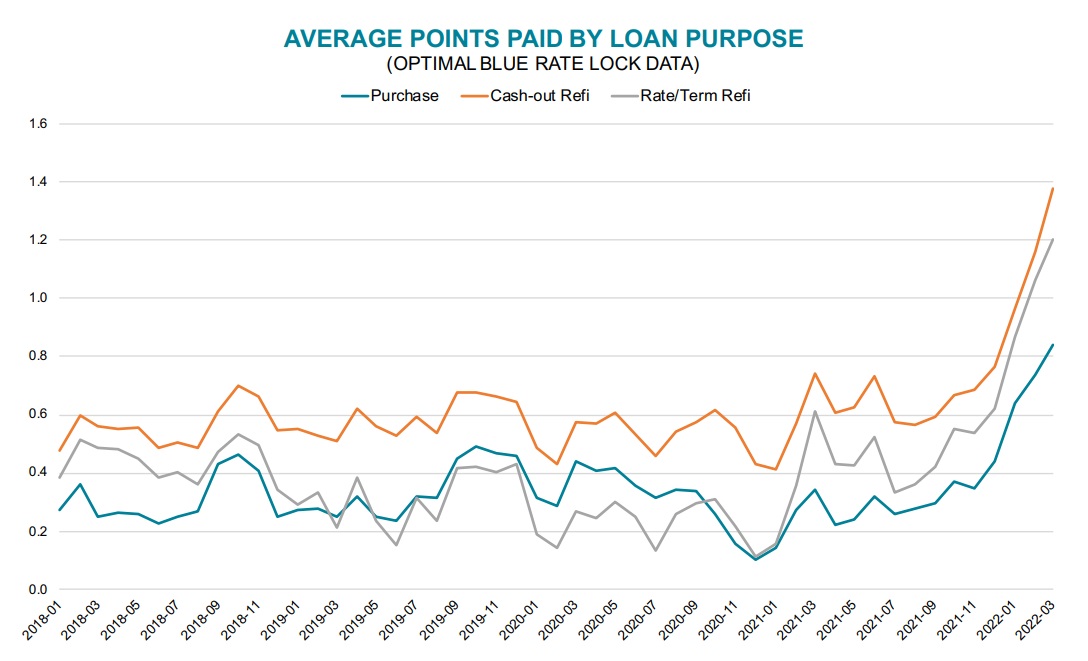
Source: Black Knight Mortgage Monitor.
Another technique to lock in a lower rate is to pay points to buy down the interest rate.
Homebuyers taking out purchase loans in March paid 84 basis points on average, more than three times the average points paid by homebuyers in the first half of 2021, Black Knight said. A basis point is one hundredth of a percentage point, so 84 basis points amounts to $3,150 in additional closing costs on a $375,000 mortgage.
Rising home prices and lender costs helped drive up homebuyers’ closing costs by 13.4 percent in 2021, to an average of $6,905, CoreLogic found in a recent report.
Borrowers refinancing existing mortgages were willing to pay even more to get a lower rate. Borrowers cashing out home equity in March paid 138 basis points on average, up from 62 basis points a year ago, while not taking cash out paid 120 basis points, up from 42 basis points a year ago.
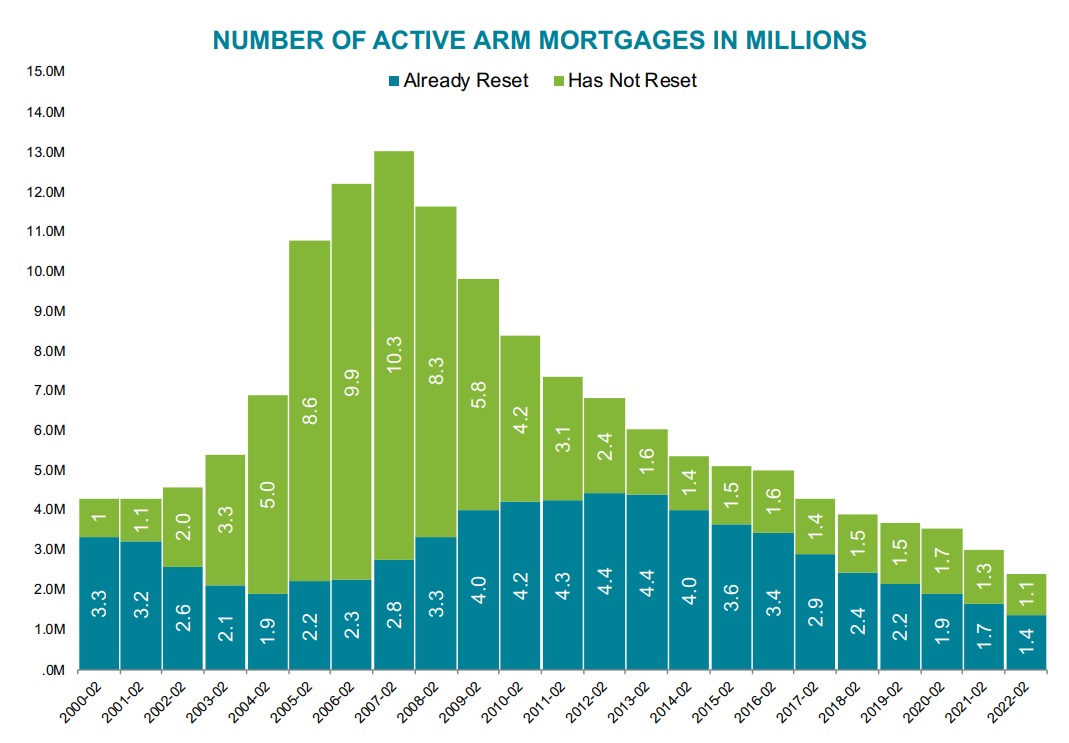
Source: Black Knight Mortgage Monitor.
For the time being, Black Knight analysts say the spike in ARM originations doesn’t pose the same concern that it did before the 2007-09 housing crash and recession.
That’s because today’s ARM borrowers have an average credit score of 757, and 85 percent are taking out loans with introductory interest rate periods of seven to 10 years.
In February, 2007, Black Knight estimated there were 13.1 million ARM loans outstanding, including 10.3 million whose borrowers had yet to experience the payment shock of a rate adjustment. Today, there are closer to 2.5 million active ARM loans, more than half of which have already reset.
Get Inman’s Extra Credit Newsletter delivered right to your inbox. A weekly roundup of all the biggest news in the world of mortgages and closings delivered every Wednesday. Click here to subscribe.
Email Matt Carter

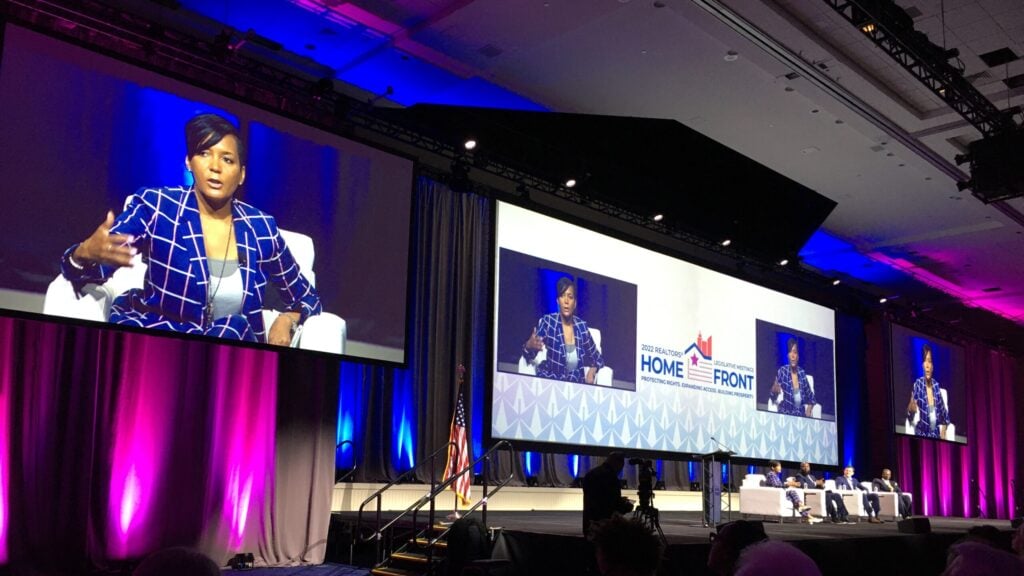
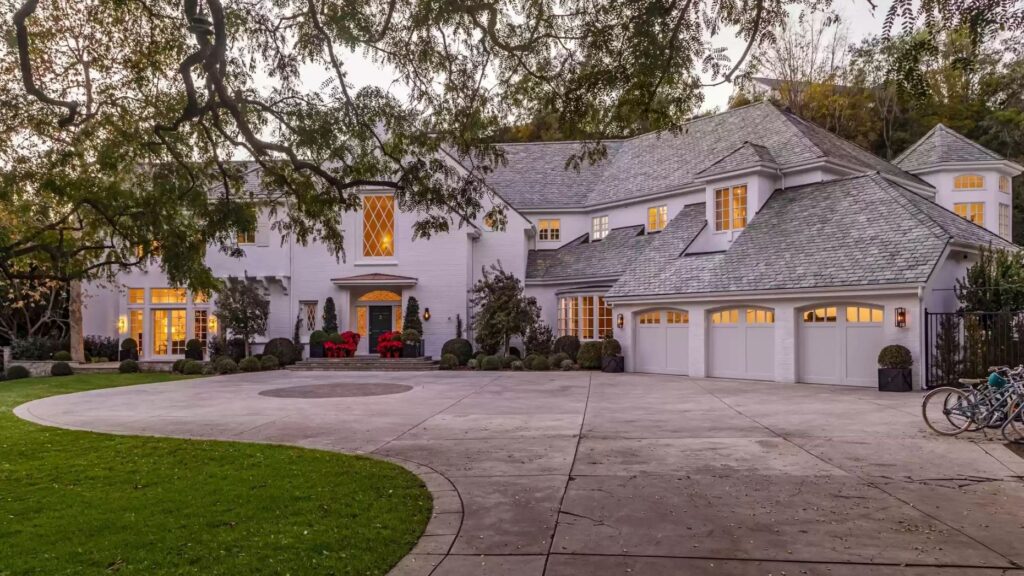
 Are You Interested in West Eleventh Residences Miami?
Are You Interested in West Eleventh Residences Miami? Are You Interested in ONE Park Tower by Turnberry?
Are You Interested in ONE Park Tower by Turnberry? Are You Interested in Diesel Wynwood Condominium?
Are You Interested in Diesel Wynwood Condominium? Are You Interested in Five Park Miami Beach?
Are You Interested in Five Park Miami Beach? Are You Interested in Cipriani Residences Miami?
Are You Interested in Cipriani Residences Miami? Are You Interested in Bentley Residences Miami?
Are You Interested in Bentley Residences Miami? Are You Interested in Baccarat Residences Brickell?
Are You Interested in Baccarat Residences Brickell? Are You Interested in Aria Reserve Miami?
Are You Interested in Aria Reserve Miami? Are You Interested in 888 Brickell Dolce & Gabbana | Miami?
Are You Interested in 888 Brickell Dolce & Gabbana | Miami? Are You Interested in 600 Miami WorldCenter?
Are You Interested in 600 Miami WorldCenter? Are You Interested in HUB MIAMI RESIDENCES?
Are You Interested in HUB MIAMI RESIDENCES? Are You Interested in WALDORF ASTORIA RESIDENCES?
Are You Interested in WALDORF ASTORIA RESIDENCES?